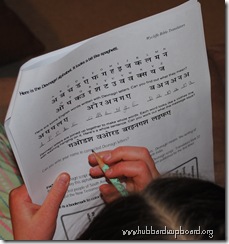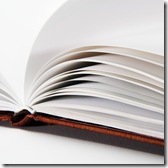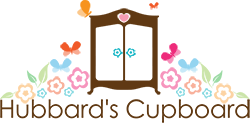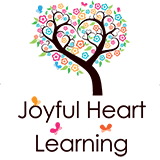For those of us who speak and read the English language fluently, there are thousands of Bibles available to us. In our home alone, we have at least one children’s Bible for each child, a handful of smaller sized Bibles for quick reference, and many full size Bibles – in various versions such as NIV, NKJ, and ESV. But what about other cultures and languages?
A blank page. That is what John 3:16 looks like in many languages.
I’ve recently blogged about our experiences with the My Father’s World Exploring Countries and Cultures curriculum. I mentioned that we have been enjoying reading the YWAM biographies on missionaries (from the Christian Heroes Then and Now series) that MFW has chosen to use within ECC. The very first YWAM biography used in the curriculum was on Cameron Townsend. The kids were intrigued by his life and how God had placed it upon his heart to translate the Bible into every language.
A few weeks ago, in our Hero Tale readings, the focus was on William Tyndale. I was also able to find a Torchlighter video on Tyndale at the  library. After viewing the video, we completed a related worksheet on translating for kids. The kids began making connections to Cameron Townsend and his start of Wycliffe Bible Translators. All of the kids were interested in learning more, especially our five year old son. I then remembered that, earlier in the school year, I had come across free online lessons from Wycliffe on Bible translation. So, in an attempt to encourage our son in his new interest and to expose all of our children to the important work of Bible translation, we took a two week hiatus from MFW ECC to devote to learning about the Steps to Bible Translation.
library. After viewing the video, we completed a related worksheet on translating for kids. The kids began making connections to Cameron Townsend and his start of Wycliffe Bible Translators. All of the kids were interested in learning more, especially our five year old son. I then remembered that, earlier in the school year, I had come across free online lessons from Wycliffe on Bible translation. So, in an attempt to encourage our son in his new interest and to expose all of our children to the important work of Bible translation, we took a two week hiatus from MFW ECC to devote to learning about the Steps to Bible Translation.
The online downloadable lessons are free and easy to follow. The only thing that I was missing was their recommended resource called ‘My Volcano Adventure Resource CD‘. Fortunately, we were able to borrow it from a friend of ours. The CD had audio of John 3:16 in other languages, audio samples of a language that uses both speaking and whistling, short video clips with true stories of the impact of Bible translation, etc. Our friend also let us borrow the accompanying leader’s guide. It had a LOT more ideas. I incorporated a few ideas from the guide for Bible memory and additional activities, but I ended up mostly following the online lessons. In my opinion, the online lessons seemed more focused and centered on the translation aspect.
 (Above: ‘Alphabeti Spaghetti’ from lesson 5
(Above: ‘Alphabeti Spaghetti’ from lesson 5
in Wycliffe’s Steps to Bible Translation)
So, what did we do? We planted seeds and learned how Bible translation is a long process. It takes much time and prayer. We were reminded of the 10/40 window and how there are over 2,000 language groups that do not have John 3:16 or any other portion of Scripture in their own language. We prayed for Bible translators and for those still waiting for the Bible in their own heart language. We learned about the International Phonetic Alphabet and caught a glimpse of how difficult creating an alphabet and translating languages might be. We saw the importance of learning to read and of hiding God’s Word in our hearts. We became more grateful for the access we have to God’s Word in our own language. We memorized Hebrews 4:12 and had ‘sword drills’. We caught a vision for the need for everyone to have the Bible in their own heart language.
Wycliffe Bible Translators have launched the Last Languages Campaign. Their goal is to have a Bible translation project started for every language that needs it by the year 2025.
Please pray for Bible translation around the world.
“Heaven and earth will pass away,
but my words will never pass away.”
(Matthew 24:35)



